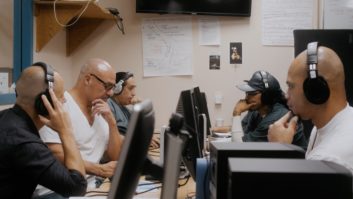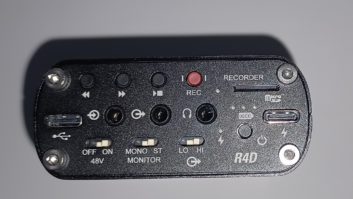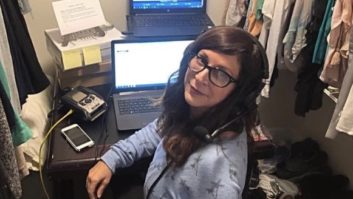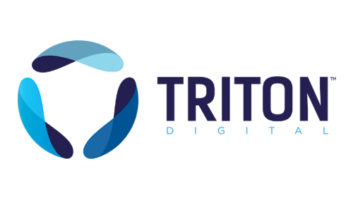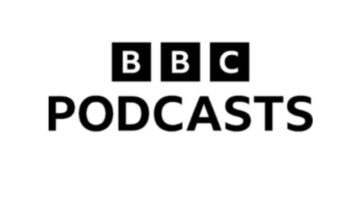Much Radio Content Is Intended for Real-Time Use. But Then What Happens to It?
One of the buzzwords in the radio business today is podcasting, and everyone in the broadcast industry, from programmers to equipment manufacturers, seems to be considering its impact or inclusion in their future.
In more general terms, this applies to any “on-demand” download and playback operation, but “podcasting” seems to have gained status as the catch-all term, so we’ll use it here in its broadest sense.
Much of the interest in podcasting has been stimulated by the egalitarian opportunities it seems to provide for anyone with a Web connection to become a broadcaster; and a few literally homegrown radio shows distributed via podcasting have gained some notoriety.
Of course, this is like saying that everyone who posts some text to a Web page is a published author. What makes podcasts really popular, though, is their ability to become aggregated on central listing pages, and to be referred by “word of Web” among online users. Once subscribed to, podcasts – like any RSS (Really Simple Syndication) feed – become “sticky,” and fresh content is continually downloaded to the subscriber until a subscription is canceled.
Yet it stands to reason that the chief beneficiaries of the process will be those who can provide sustainable, quality content, and direct large volumes of users to it. This implies that broadcasters ultimately could be the big winners in podcasting, thus generating the recent upswell of interest in consumer downloading of radio content within the industry.
Perishability
This argument glosses over one of the most important elements of the equation, however. From its inception, radio has provided a real-time service, so its content has become optimized for “ephermal consumption.” This means that most radio content loses value quickly – often immediately – after it is broadcast. Given that attribute, the value of podcasting is minimal for such typical radio fare.
Certainly not all radio content inherently fits that description, however. There is some material that lends itself well and directly to podcast application. Moreover, broadcasters also can leverage their existing production facilities easily to create variations or wholly different content from that broadcast on air, to better prepare it for podcast applications.
For a fuller understanding of these distinctions, let’s examine the spectrum of possibilities for timeliness of radio content:
Most radio music services are truly ephemeral in nature. It is for this reason that the concept of song “rotation” is possible, of course. Besides, broadcasters do not typically possess or obtain podcasting rights (as unformed or unsettled as they currently are) for music that they broadcast. So this abundance of traditional, on-air radio content is off the table for podcasts.
Another class of radio content can have some degree of short-term storage value, while also avoiding rights problems. Call this “perishable, original” content, such as a station’s local newscasts, ski reports or concert calendars, which may retain some worth for an hour, or a day, or a week. This content therefore is good for posting as a podcast immediately after its production or initial airing.
In many cases these broadcasts eventually will be replaced by an updated version, which is ideally suited to the podcast subscription model. Every time a new ski report is posted, for example, it will be downloaded automatically to subscribers. Depending on the settings of the subscriber’s podcast client, the new feed will delete and replace the previous feed or be stored along with the previous version.
Sports broadcasts can also occupy this category, although their long-form nature may make them less flexible, and bandwidth costs for podcast delivery will necessarily be higher for the podcaster (if incremental fees are assessed). There may also be rights constraints to podcasting of such content.
Depending on the subject matter, some talk radio content may retain short-term value, as well, and a local station’s own call-in programs typically are free from any usage limitations. At the proper length (e.g, divided in separate segments by topics or guests), such content can work well for podcasting.
Other news and talk content may have much longer-lasting value, such as documentary or news magazine pieces, particularly those that may have educational value for teachers or researchers. Call these programs “evergreen” content. Live concerts also can fit in this area, although the length and rights constraints noted above may again apply.
Alternate versions
The distinctions noted above apply to content as it would be broadcast in a station’s normal on-air operations, and simply posted – perhaps with some segmentation added – as podcasts. This means that the same value gradations considered for podcasting would apply to a simple on-air “broadcatching” device, or a “personal audio recorder” (i.e., Radio TiVo), should it ever gain a similar popularity to that which podcasts are now amassing.
But as we alluded to earlier, broadcasters may wish to repurpose on-air content for its podcast version, or create completely new programming for podcast delivery. One relatively simple method of repurposing content is the “tell me more” approach, in which material that may have been gathered in preparation for broadcast production – but never used due to time constraints or excessive detail – could be inserted in the podcast version.
For example, a reporter may have recorded an entire speech given by a newsmaker, but used only a few soundbites from it in the on-air piece. The podcast version can include longer excerpts, or perhaps the full speech can be offered as a separate podcast.
Here again, the primary attribute of repurposing or creating podcasts is making the content as robust as possible to the passage of time. Think of it like adding preservatives to on-air content. The greatest bang for the buck comes from material that can last as long as possible without refreshing. However, offering a frequently refreshed short-form info-blast via podcast is a great application of the utility, and can be perceived by users as having significant value as an on-demand service.
Is there a business model?
The most aptly compared business model to the podcast is the magazine subscription. The magazine world has established optimal frequencies of publication, and these vary with content.
For example, most newspapers are published daily, most news/analysis magazines weekly, most special interest publications monthly (or biweekly, as in the case of Radio World), some high-end journals quarterly, and retrospective aggregations annual. Similar metrics can be used to determine how podcast subscriptions might be structured, and perhaps eventually monetized.
Another model at which broadcasters are adept is a sponsored approach. Each podcast can include an advertiser’s spot(s), which can be of any appropriate length and content. Downloading reports can be provided to the advertiser, allowing yet another new feature for a station’s customers.
Podcasting provides a new level of opportunity for online radio beyond that presented by streaming, but it is only useful for the appropriate content – much of which may not fit typical broadcast content formats. Applied properly, however, podcasting can offer a good way for broadcasters to strengthen their local brands and add valuable service to their communities.





